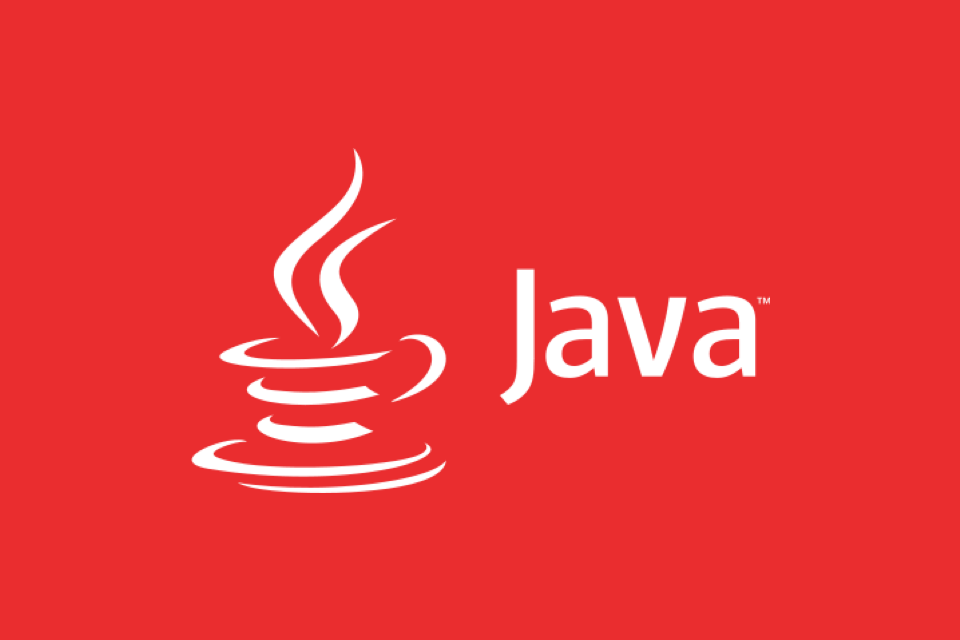Advanced Java Debugging with VisualVM and JConsole
Jul 20, 2025 am 02:43 AMThe key to Java debugging is to master the use of VisualVM and JConsole tools. 1. VisualVM is a graphical troubleshooting tool that integrates multi-JDK tools. It can view the JVM running status in real time, analyze hotspot methods and frequent objects through "Sampler", and supports remote monitoring configuration and plug-in extensions. 2. JConsole is suitable for quickly viewing memory, threads, and class loading, and can detect deadlocks and observe GC frequency. 3. It is better to use the two in combination: first use JConsole to observe the exception, then deeply analyze the performance bottlenecks through VisualVM, and it is recommended to grab the heap dump for further diagnosis.

Java debugging is an indispensable skill for developers. Especially when you are facing complex performance issues, memory leaks, or thread deadlocks, printing logs may be far from enough. At this time, it is particularly important to use tools like VisualVM and JConsole.

1. VisualVM: an intuitive and powerful performance analysis tool
VisualVM is a graphical monitoring and troubleshooting tool that integrates multiple JDK tools. It allows you to see the running status of the JVM at a glance, such as heap memory usage, thread status, class loading information, etc.
Basic usage:

- After starting the Java application, open VisualVM directly (usually in the JDK/bin directory).
- Click your program process in the application list on the left to see the real-time CPU and memory chart.
- Use the "Sampler" tag to perform CPU and memory sampling, helping you discover hotspot methods or frequently created objects.
Practical Tips:
- If you want to remotely monitor Java programs on the server, remember to add JMX parameters when starting:
-Dcom.sun.management.jmxremote -Dcom.sun.management.jmxremote.port=8089 -Dcom.sun.management.jmxremote.ssl=false -Dcom.sun.management.jmxremote.authenticate=false
- Installing plug-ins can extend functions, such as "Threads Inspector" can help analyze thread blocking and other problems.
2. JConsole: A classic monitoring tool that comes with JDK
Although the interface is not as modern as VisualVM, JConsole is still a very practical tool, especially suitable for quickly viewing memory, threading, class loading and MBean situations.

Recommended usage:
- Run the
jconsolecommand directly to start, select local or remote connection. - The “Memory” tag can see the memory changes in each area (Eden, Survivor, Old Gen), which is very helpful in judging GC frequency.
- The "Threads" page can view the current status of all threads and supports detection of deadlocks.
Analysis of common phenomena:
- If you find that Old Gen memory continues to grow, it cannot be recycled after GC, which is likely to be a memory leak.
- The number of threads is abnormally increasing. Combined with the thread state diagram, we can determine whether the thread pool is not released or thread blocking has occurred.
3. Combination of use: complementary advantages and more comprehensive investigation of problems
Although both are monitoring tools, the focus is slightly different. VisualVM is more inclined to performance analysis, while JConsole is more suitable for real-time monitoring and basic diagnosis.
You can use it in this way:
- First use JConsole to quickly observe whether there are obvious exceptions, such as frequent Full GC or thread blocking.
- Then use VisualVM for in-depth analysis, such as seeing which methods take up the most CPU time, or which objects have not been recycled.
Tips:
- Crawling heap dump is a good habit. In VisualVM, you can right-click to apply → Heap Dump. After exporting the hprof file, you can further analyze it using the MAT tool.
- If you do performance tuning frequently, it is recommended to organize commonly used JVM parameters into scripts to facilitate and quickly start applications with monitoring parameters.
Basically that's it. Mastering the basic operations of these two tools can already deal with most common Java debugging scenarios. You don't need to use the full process every time, but at critical moments, they can really save you a lot of trouble.
The above is the detailed content of Advanced Java Debugging with VisualVM and JConsole. For more information, please follow other related articles on the PHP Chinese website!

Hot AI Tools

Undress AI Tool
Undress images for free

Undresser.AI Undress
AI-powered app for creating realistic nude photos

AI Clothes Remover
Online AI tool for removing clothes from photos.

Clothoff.io
AI clothes remover

Video Face Swap
Swap faces in any video effortlessly with our completely free AI face swap tool!

Hot Article

Hot Tools

Notepad++7.3.1
Easy-to-use and free code editor

SublimeText3 Chinese version
Chinese version, very easy to use

Zend Studio 13.0.1
Powerful PHP integrated development environment

Dreamweaver CS6
Visual web development tools

SublimeText3 Mac version
God-level code editing software (SublimeText3)

Hot Topics
 VSCode settings.json location
Aug 01, 2025 am 06:12 AM
VSCode settings.json location
Aug 01, 2025 am 06:12 AM
The settings.json file is located in the user-level or workspace-level path and is used to customize VSCode settings. 1. User-level path: Windows is C:\Users\\AppData\Roaming\Code\User\settings.json, macOS is /Users//Library/ApplicationSupport/Code/User/settings.json, Linux is /home//.config/Code/User/settings.json; 2. Workspace-level path: .vscode/settings in the project root directory
 How to handle transactions in Java with JDBC?
Aug 02, 2025 pm 12:29 PM
How to handle transactions in Java with JDBC?
Aug 02, 2025 pm 12:29 PM
To correctly handle JDBC transactions, you must first turn off the automatic commit mode, then perform multiple operations, and finally commit or rollback according to the results; 1. Call conn.setAutoCommit(false) to start the transaction; 2. Execute multiple SQL operations, such as INSERT and UPDATE; 3. Call conn.commit() if all operations are successful, and call conn.rollback() if an exception occurs to ensure data consistency; at the same time, try-with-resources should be used to manage resources, properly handle exceptions and close connections to avoid connection leakage; in addition, it is recommended to use connection pools and set save points to achieve partial rollback, and keep transactions as short as possible to improve performance.
 Mastering Dependency Injection in Java with Spring and Guice
Aug 01, 2025 am 05:53 AM
Mastering Dependency Injection in Java with Spring and Guice
Aug 01, 2025 am 05:53 AM
DependencyInjection(DI)isadesignpatternwhereobjectsreceivedependenciesexternally,promotingloosecouplingandeasiertestingthroughconstructor,setter,orfieldinjection.2.SpringFrameworkusesannotationslike@Component,@Service,and@AutowiredwithJava-basedconfi
 python itertools combinations example
Jul 31, 2025 am 09:53 AM
python itertools combinations example
Jul 31, 2025 am 09:53 AM
itertools.combinations is used to generate all non-repetitive combinations (order irrelevant) that selects a specified number of elements from the iterable object. Its usage includes: 1. Select 2 element combinations from the list, such as ('A','B'), ('A','C'), etc., to avoid repeated order; 2. Take 3 character combinations of strings, such as "abc" and "abd", which are suitable for subsequence generation; 3. Find the combinations where the sum of two numbers is equal to the target value, such as 1 5=6, simplify the double loop logic; the difference between combinations and arrangement lies in whether the order is important, combinations regard AB and BA as the same, while permutations are regarded as different;
 python pytest fixture example
Jul 31, 2025 am 09:35 AM
python pytest fixture example
Jul 31, 2025 am 09:35 AM
fixture is a function used to provide preset environment or data for tests. 1. Use the @pytest.fixture decorator to define fixture; 2. Inject fixture in parameter form in the test function; 3. Execute setup before yield, and then teardown; 4. Control scope through scope parameters, such as function, module, etc.; 5. Place the shared fixture in conftest.py to achieve cross-file sharing, thereby improving the maintainability and reusability of tests.
 Laravel error and exception handling
Jul 31, 2025 am 11:57 AM
Laravel error and exception handling
Jul 31, 2025 am 11:57 AM
Laravel's error and exception handling mechanism is based on the PHP exception system and Symfony component, and is managed uniformly by the App\Exceptions\Handler class. 1. Record exceptions through the report() method, such as integrating Sentry and other monitoring services; 2. Convert exceptions into HTTP responses through the render() method, supporting custom JSON or page jumps; 3. You can create custom exception classes such as PaymentFailedException and define their response format; 4. Automatically handle verification exception ValidationException, and manually adjust the error response structure; 5. Decide whether to display details based on the APP_DEBUG configuration.
 Understanding the Java Virtual Machine (JVM) Internals
Aug 01, 2025 am 06:31 AM
Understanding the Java Virtual Machine (JVM) Internals
Aug 01, 2025 am 06:31 AM
TheJVMenablesJava’s"writeonce,runanywhere"capabilitybyexecutingbytecodethroughfourmaincomponents:1.TheClassLoaderSubsystemloads,links,andinitializes.classfilesusingbootstrap,extension,andapplicationclassloaders,ensuringsecureandlazyclassloa
 How to work with Calendar in Java?
Aug 02, 2025 am 02:38 AM
How to work with Calendar in Java?
Aug 02, 2025 am 02:38 AM
Use classes in the java.time package to replace the old Date and Calendar classes; 2. Get the current date and time through LocalDate, LocalDateTime and LocalTime; 3. Create a specific date and time using the of() method; 4. Use the plus/minus method to immutably increase and decrease the time; 5. Use ZonedDateTime and ZoneId to process the time zone; 6. Format and parse date strings through DateTimeFormatter; 7. Use Instant to be compatible with the old date types when necessary; date processing in modern Java should give priority to using java.timeAPI, which provides clear, immutable and linear






